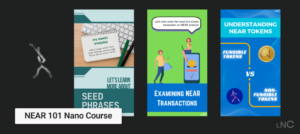Notes on Serialization
Login with NEARSmart contracts need to be able to communicate complex data in a simple way, while also reading and storing such data into their states efficiently. To achieve such simple communication and efficient storage, smart contracts morph the data from their complex representation into simpler ones. This process of translating complex objects into simpler …

